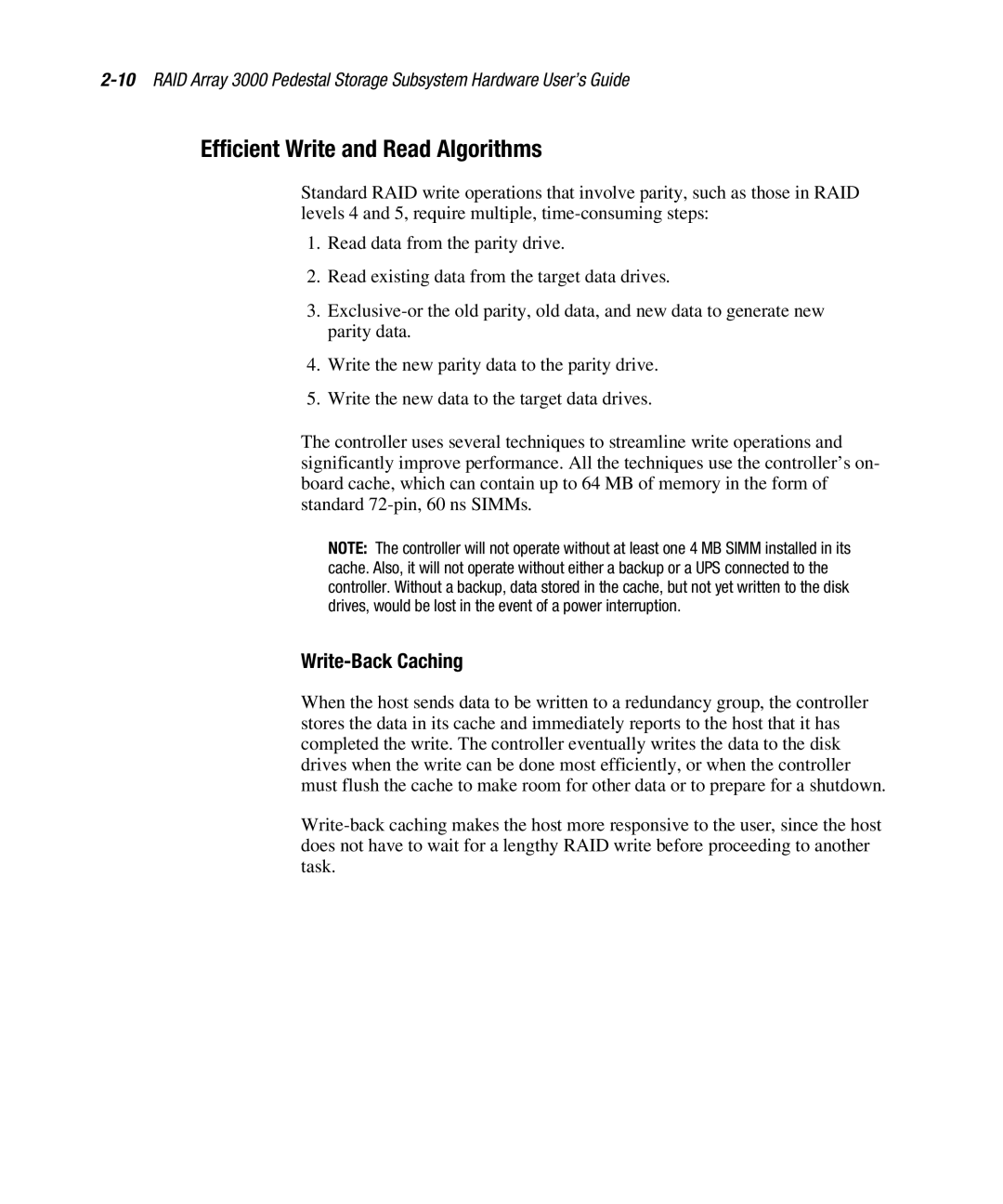Efficient Write and Read Algorithms
Standard RAID write operations that involve parity, such as those in RAID levels 4 and 5, require multiple,
1.Read data from the parity drive.
2.Read existing data from the target data drives.
3.
4.Write the new parity data to the parity drive.
5.Write the new data to the target data drives.
The controller uses several techniques to streamline write operations and significantly improve performance. All the techniques use the controller’s on- board cache, which can contain up to 64 MB of memory in the form of standard
NOTE: The controller will not operate without at least one 4 MB SIMM installed in its cache. Also, it will not operate without either a backup or a UPS connected to the controller. Without a backup, data stored in the cache, but not yet written to the disk drives, would be lost in the event of a power interruption.
Write-Back Caching
When the host sends data to be written to a redundancy group, the controller stores the data in its cache and immediately reports to the host that it has completed the write. The controller eventually writes the data to the disk drives when the write can be done most efficiently, or when the controller must flush the cache to make room for other data or to prepare for a shutdown.
